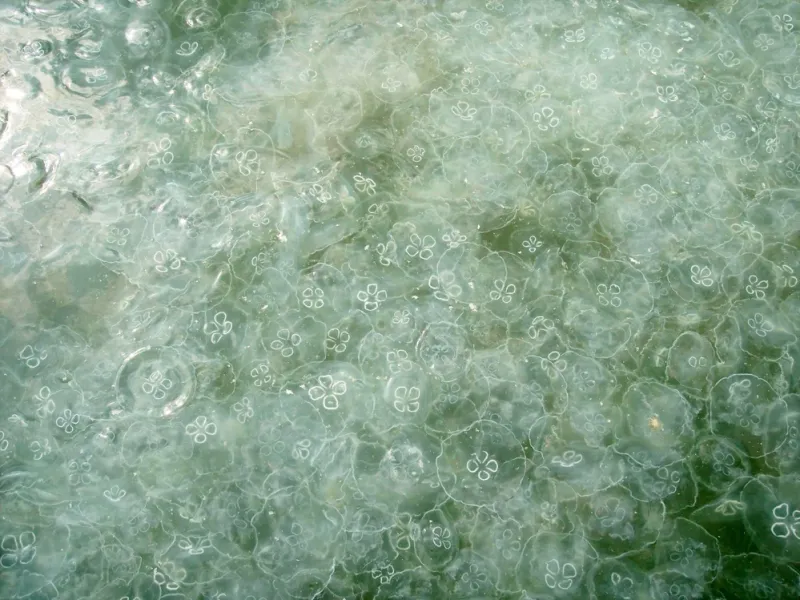A Bloom of Moon Jellies

In recent years, blooms of jellyfish, such as these moon jellies (Aurita aurita) in the Chesapeake Bay, have become more common around the world for a number of different reasons. One result of these blooms is that there is less food for fish and more for bacteria. This is because the large numbers of jellyfish eat zooplankton—potential fish food—but most fish don't eat jellyfish. Instead, the jellyfish release this extra energy back into the water, where it feeds bacteria. This energy, in the form of dissolved organic matter, is essentially lost, disrupting local food chains and cutting off a food source for larger, more productive animals.

